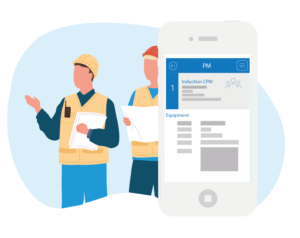Survey: More than 40 Percent of Real Estate Companies Rely on Spreadsheets or Paper-Based Processes to Manage Properties
New Generations of Renters Demand Technology: High-speed Broadband and E-Payments are Most Important Amenities for Students, Young Professionals and Millennials
SOLON, Ohio – Feb. 27, 2018 – MRI Software, a global leader in real estate software solutions, recently conducted a survey revealing that 42 percent of commercial and multifamily real estate owners and operators rely at least partly on spreadsheets or paper-based processes to manage properties. The survey also showed that more than 1 in 10 rely on spreadsheets and/or paper-based processes alone, without any additional purpose-built real estate software.
Using spreadsheets and paper-based processes to manage properties introduces a host of serious problems for a real estate organization, including:
- Cumbersome to manage: If the individuals who built the company’s spreadsheet-based system leave the organization, business-critical data may become inaccessible because no one else understands how to manage it.
- Lack of auditability: With each new version of a spreadsheet, the system becomes increasingly difficult to audit because there is no continual thread tying the reports to the original data. It’s even more difficult to audit paper-based systems.
- Business risks: Manually entering data from multiple sources into spreadsheets and paper-based systems increases the risk of errors, data security issues, and a loss of operational control.
- Scalability: Spreadsheets and paper-based systems severely limit the ability to share information, collaborate, and control access to data. Additionally, spreadsheets and paper-based systems do not integrate with other software solutions, locking companies out of technologies that could materially improve efficiency, increase customer satisfaction, attract additional leads and aid with long-term planning.
Generational Expectations for Technology
In the multifamily sector, the survey found that owner-operators are experiencing significant differences between age groups regarding the most important amenities residents seek in an apartment. The survey revealed the following disparities:
High-speed broadband and e-bill payments/rent portals rank as the two most important apartment features for students, young professionals and Millennials. These two features beat out in-unit laundry, proximity to public transportation, community storage, assigned parking and cable television for the top two spots.
For established professionals, families and middle-aged renters, high-speed broadband is still the most important amenity, followed by in-unit laundry, parking features and cable television.
For seniors and retirees, community security and in-unit laundry are the two most important features. High-speed broadband came in 12th on the list, and e-bill pay was tied for third-to-last out of a possible 24 features.
Within the commercial sector, which includes office buildings, retail, and industrial properties, respondents said that the top two services requested by tenants are electronic payments and electronic billing. These two features beat out proximity to public transportation, shared common and conference areas, and kitchen facilities.
“Our survey shows that more than 40 percent of the real estate market still relies on general-purpose spreadsheets or, even worse, paper-based processes to manage their properties,” said Brian Zrimsek, Industry Principal, at MRI Software. “Millennials and even younger generations now expect digital amenities such as e-bill pay, and many real estate organizations are falling behind in adopting more specialized real estate technology solutions. As these younger generations move into senior management roles at the companies where they work, their digital expectations will carry over into commercial real estate. Those organizations that don’t adapt will ultimately find themselves unable to compete in an increasingly digital world.”
MRI surveyed 219 real estate executives: 51 percent were VP-level or higher and 35 percent were directors, managers or property managers. As for company size, 30 percent of respondents worked at companies with more than 50 employees, 25 percent had 11 to 50 employees, and 46 percent had 10 or fewer. Many organizations operated in multiple real estate classes, with a breakdown as follows: 41 percent multifamily, 30 percent office, 21 percent retail, and 26 percent in other real estate sectors.
Please find the full report from MRI Software here.
About MRI Software
MRI Software is a leading provider of innovative real estate software applications and hosted solutions. MRI’s comprehensive and flexible technology platform coupled with an open and connected ecosystem meets the unique needs of real estate businesses-from property-level management and accounting to investment modeling and analytics for the global commercial and residential markets. A pioneer of the real estate software industry, MRI develops lasting client relationships based on nearly five decades of expertise and insight. Through leading solutions and a rich partner ecosystem, MRI liberates real estate companies to elevate their business and gain a competitive edge. For more information, please visit mrisoftware.com.
PR Contact:
Jeff Miller
LEWIS
mrisoftware@teamlewis.com
541-207-3461
Affordable Housing Asset Manager Insights: Maximize Portfolio Performance by Supporting Housing Operators
From rising operational costs to increased demand for flexibility and technology, asset managers are navigating unique challenges to support property management teams while ensuring portfolio health and resilience. Recent MRI research delves into the…

